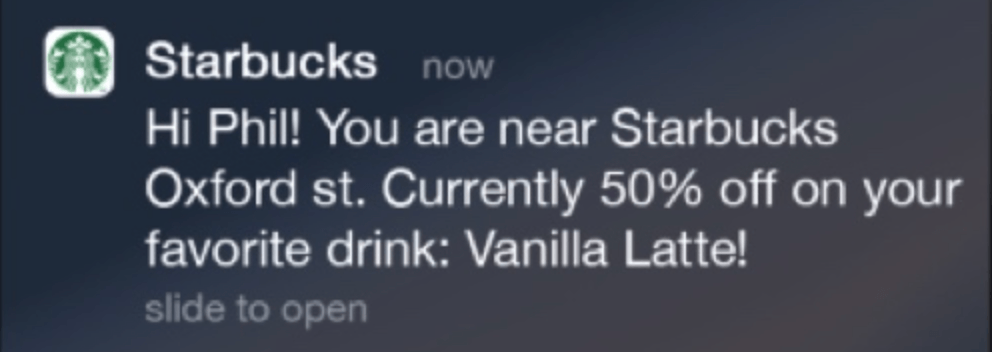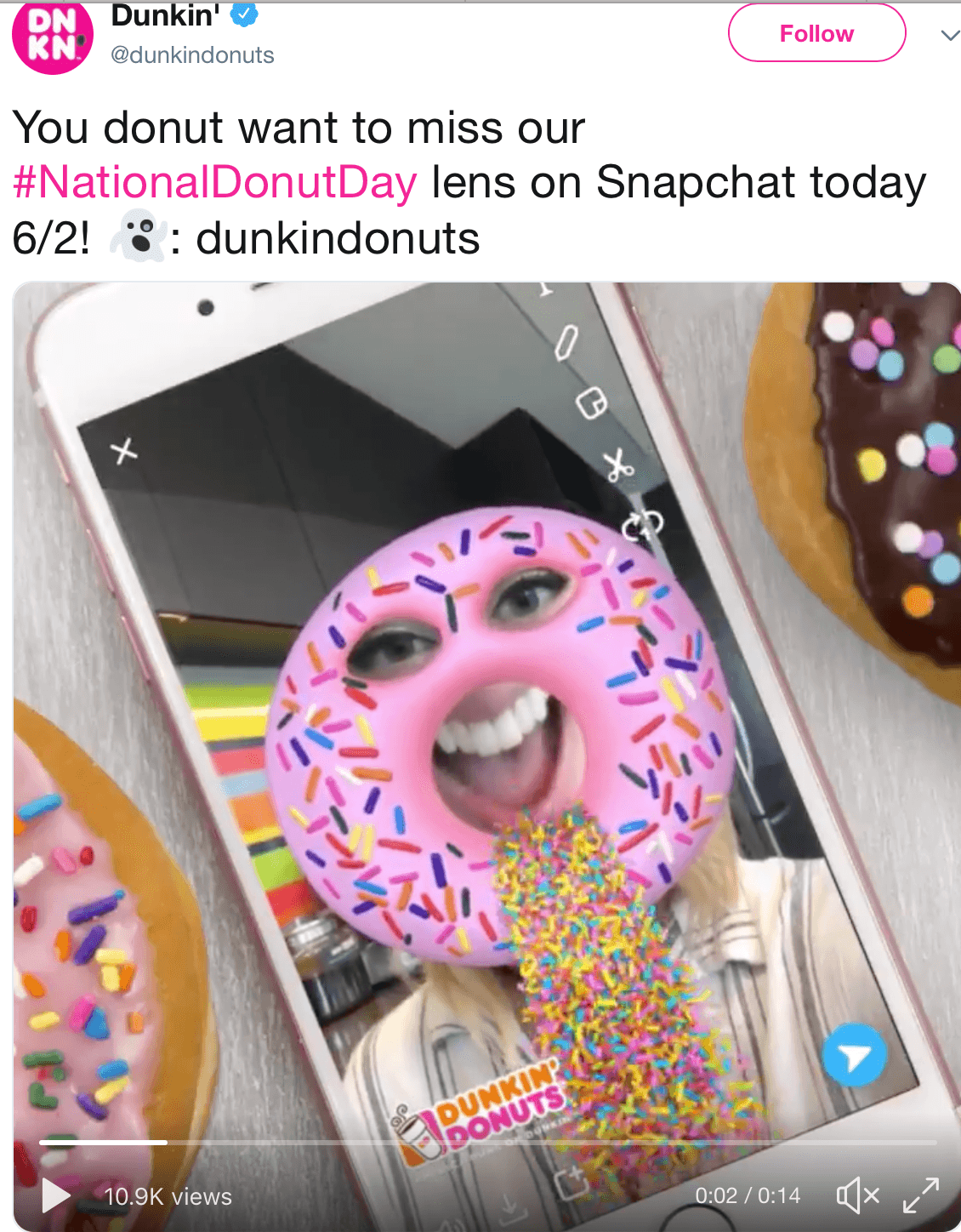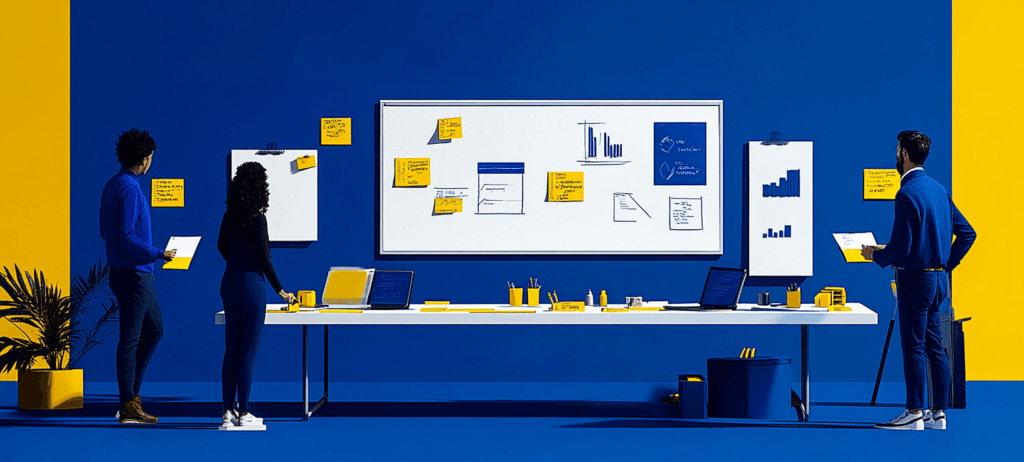-
 8 min. read
8 min. read
-
 Macy Storm
Macy Storm Content Marketing Consultant
Content Marketing Consultant
- Macy is a content marketing consultant with over five years of experience creating content for dozens of industries including home services, recreation, and education. She’s written about every marketing topic under the sun, from SEO to AI to email marketing. Her work has been featured by Search Engine Journal, HubSpot, Entrepreneur, Clutch, and more. In her free time, Macy enjoys crafting, reading comic books, and walking her dog Daisy.
Want to reach more local customers and drive them to visit your business? If so, geofencing marketing is an excellent opportunity for you to reach more local customers looking for your business. In this post, we’ll share five geofencing examples to help show you how you can use geofencing for your business, as well as three best practices for geofencing marketing. If you need help getting started with geofencing, call us today at 888-601-5359 to speak with a strategist about how geofencing can drive results for your business.
What is geofencing?
Before we dive into examples of geofencing, let’s quickly answer the question, “What is geofencing?” Geofencing is the practice of using virtual barriers to send targeted ads to people who enter or exit designated areas.
With geofencing, you can deliver exclusive deals and personalized experiences for customers in a specific area — typically near your business, a competitor’s location, or event space. The most common forms of geofencing marketing are app notifications and ads. Geofencing ads typically appear in search results as pay-per-click (PPC) services or as ads in social media feeds.
When a user enters, dwells, or exits your defined “fence,” you can send them a notification or trigger a personalized ad to encourage them to visit your business. Now that we answered, “What is geofencing,” let’s take a look at five examples of effective geofencing.
5 creative geofencing examples
Many big-name companies already use geofencing to attract customers to visit their stores and buy. Let’s take a look at five examples of geofencing marketing.
1. Starbucks
Starbucks uses geofencing to advertise drinks to interested customers. They commonly send push notifications when users walk by their business or are in the nearby area. Let’s look at a few geofencing examples from this company.
 This coffee company advertises specials on drinks to get users in the door. One great example of this is their happy hour special. The happy hour special, which occurs on select Thursdays from 2-7 p.m., offers BOGO free on any grande or larger drink.
This coffee company advertises specials on drinks to get users in the door. One great example of this is their happy hour special. The happy hour special, which occurs on select Thursdays from 2-7 p.m., offers BOGO free on any grande or larger drink.
When users are in the nearby area on these happy hour Thursdays, they get a special push notification letting them know of the great deal Starbucks is offering. It’s a great deal to get users in the door. Starbucks sends personalized app notifications too.
If a user typically orders a mocha Frappuccino, Starbucks will send a geofenced notification enticing that user to grab the Frappuccino. The customized information entices more users to visit Starbucks. These geofencing examples show you how you can use your app to drive people into your business.
2. Dunkin’
We can’t talk about Starbucks’ geofencing marketing efforts without mentioning Dunkin’. Dunkin’ uses similar strategies to Starbucks by sending app notifications when users enter their geofence. Users will see exclusive deals for drinks and food from Dunkin’.
Additionally, Dunkin’ uses Snapchat filters to drive people into their business. On National Donut Day, Dunkin’ used a giant sprinkle donut filter to engage users and get them in the door. If users were in the geofence around a Dunkin’ and took a Snapchat, they had access to this filter.
 It was a great way to get users to visit Dunkin’ and get their free donut with a purchase. These two examples of geofencing help Dunkin’ drive customers into their business and increase sales.
It was a great way to get users to visit Dunkin’ and get their free donut with a purchase. These two examples of geofencing help Dunkin’ drive customers into their business and increase sales.
3. Uber
Uber heavily relies on geofencing marketing for drivers to earn fares. This company uses geofencing to create fences around airports, nightclubs, hotels, and more. When users get off a plane, Uber sends them a push notification letting them know that there are Uber drivers available nearby to take them to their destination.
This strategy works exceptionally effectively for driving services like Uber because it helps them get more fairs. It’s one of the many examples of geofencing that show how you can earn more sales by creating an effective geofence in the right location.
4. Johns Hopkins Hospital
Johns Hopkins Hospital uniquely used geofencing marketing to reach people. This hospital utilized geofencing to target people for job openings. They created social media ads that appeared in qualified users’ newsfeeds, advertising open job opportunities.
In this particular instance, they targeted people who had specialized experience in pediatrics. Whether it was a Facebook or LinkedIn profile, Johns Hopkins used their information to show ads to potential candidates. It was a beneficial geofencing marketing strategy for them and helped them reach valuable candidates to fill their job openings.
5. C.R. England
Similar to Johns Hopkins, C.R. England used geofencing to find truck drivers to fill their open positions.
These ads appear at places like truck stops. In the ad copy, C.R. England made compelling offers to entice people to apply for their open truck drive positions.
Since most trucking companies operate the same, C.R. England focused on the small things that helped them stand out as a company. They offered a slight increase in pay and extra rest days between runs to entice people to apply to their open positions.
These geofenced ads, in combination with some persuasive ad copy, helped C.R. England earn more job applicants for their open positions.
How can I effectively use geofencing?
As you can see, many companies effectively use geofencing marketing to drive valuable leads and candidates for their companies. If you want to take advantage of this great marketing tool, check out these three best practices for using geofencing effectively.
1. Keep your fences small
The biggest mistake companies make with geofencing is creating fences that are too large. You don’t want to build fences that expand too far because they won’t be useful for your business. If you create a fence that reaches people who are 20 miles away, they aren’t likely to visit your business.
Geofencing only works if your audience is within a short enough distance to visit your company. When people typically walk to your business, you’ll keep your geofence within a four to five-minute walk. If people usually drive to your business, you’ll want to keep your geofence at a four to five-minute drive.
By keeping your fences small, you’re more likely to drive people to your business.
2. Set up fences where your audience spends time
When you create geofences, you don’t need to stick to setting up fences around your business. To have a fully effective campaign, you must set up your fences where your audience is likely to engage with your content. One common place to set up a fence is at a competitor’s place of business.
This practice, known as competitor geofencing advertising, enables you to deliver ads and push notifications that get people to choose your business over your competition. It’s a great place to set up a fence and reach users who are interested in the products or services you offer. You want to target people where they are likely to be or need your business.
For example, Uber targets people with geofencing at airports and hotels. These are locations where users are likely to need a ride to get to different destinations. By targeting people in the right places, you’ll create a more effective geofencing marketing campaign.
3. Give your audience a reason to act
Your geofencing ads and notifications should always compel your audience to act. It shouldn’t just be an advertisement for your business. You must give your audience a reason to visit your store.
Whether it’s a sale, exclusive discount, or personalized offer, you must get your audience to act. For example, Starbucks sending a push notification like “Take a break! Come to Starbucks for BOGO any handcrafted beverages (grande or larger) from 2-7 p.m.,” tell users exactly what to do and what they get out of completing that action.
By giving your audience a reason to act, they’re more likely to take advantage of your offers. You’ll see more success with geofencing when you create compelling propositions that resonate with your audience.
Our digital marketing campaigns impact the metrics that improve your bottom line.
See Our Approach
$10 billion

24 million

7.14 million
Use these geofencing examples to inspire your strategy!
Geofencing marketing is an excellent opportunity for you to reach more local customers and conversions.
You can use personalized and timely offers to get leads in the door. If you’re unsure about how to get started with geofencing marketing, let our team of over 500 experts help you get started. With over a decade of experience, we know how to set up geofencing campaigns that drive results.
Are you ready to start creating geofences that drive more customers to your business? Contact us online or call us today at 888-601-5359 to speak with a strategist about our geofencing plans.
-
 Macy is a content marketing consultant with over five years of experience creating content for dozens of industries including home services, recreation, and education. She’s written about every marketing topic under the sun, from SEO to AI to email marketing. Her work has been featured by Search Engine Journal, HubSpot, Entrepreneur, Clutch, and more. In her free time, Macy enjoys crafting, reading comic books, and walking her dog Daisy.
Macy is a content marketing consultant with over five years of experience creating content for dozens of industries including home services, recreation, and education. She’s written about every marketing topic under the sun, from SEO to AI to email marketing. Her work has been featured by Search Engine Journal, HubSpot, Entrepreneur, Clutch, and more. In her free time, Macy enjoys crafting, reading comic books, and walking her dog Daisy. -

WebFX is a full-service marketing agency with 1,100+ client reviews and a 4.9-star rating on Clutch! Find out how our expert team and revenue-accelerating tech can drive results for you! Learn more
Try our free Marketing Calculator
Craft a tailored online marketing strategy! Utilize our free Internet marketing calculator for a custom plan based on your location, reach, timeframe, and budget.
Plan Your Marketing Budget

Proven Marketing Strategies

Proven Marketing Strategies
Try our free Marketing Calculator
Craft a tailored online marketing strategy! Utilize our free Internet marketing calculator for a custom plan based on your location, reach, timeframe, and budget.
Plan Your Marketing Budget
What to read next





